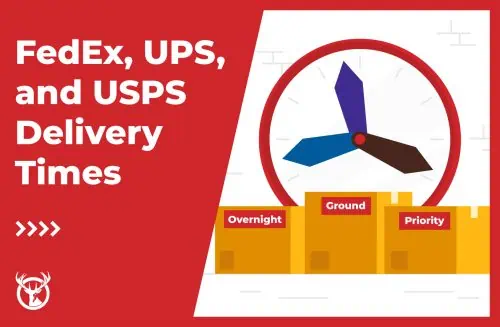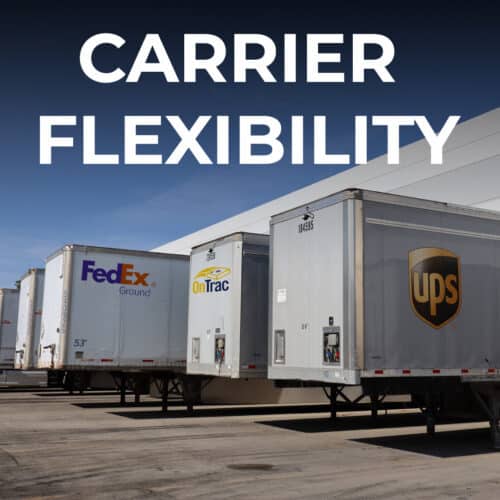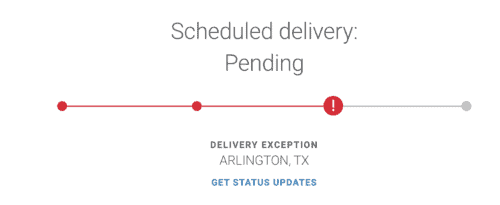After you place an order online, you might get a shipping update that mentions a carrier facility. The notice might say “Arriving at carrier facility” or “Leaving carrier facility.”
Here’s everything you need to know about this stage of order fulfillment.
Carrier facility definition

A carrier facility is a distribution center operated by a delivery company such as FedEx, UPS, or USPS. It is a hive of activity throughout the day and sometimes into the night.
Trucks drop off packages for addresses in the region served by that carrier facility. Other trucks pick up outbound packages. Delivery vans pick up parcels to deliver to customers.
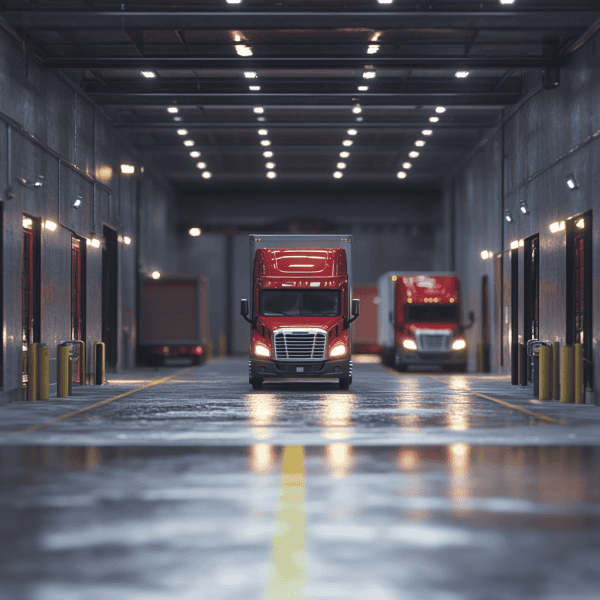
If the order originated far away from you, it might stop off at multiple carrier facilities. Each time, the package is resorted and loaded on another truck that will take it closer to its final destination.
Stages of ecommerce fulfillment
Ecommerce fulfillment is an operation that swings into action after you make a purchase online, and the carrier facility portion is just part of that. Most of the process of picking and packing your order is invisible to you.
Here’s what’s going on behind the scenes.
01
First, your order goes to a fulfillment warehouse.
02
The warehouse generates a pick list, which a picker uses to pull the items for your order from the shelves.
03
The picker delivers your order to a packing station, where a packer boxes it for shipping.
04
When your order is ready to go, you might get your first notice. It might let you know that your order has been prepared. Or your parcel may have been handed over to a carrier for delivery.
05
Your next notice will probably indicate that the carrier has your package, give you an estimated delivery date, and provide a link to track your package.
At Red Stag Fulfillment, the process of picking, packing, and shipping happens the same day you place your order for most orders.
However, at other 3PLs your package may take a few days, or even a week, to leave the fulfillment center.
If you click on the tracking link, you might see that your order has arrived at a carrier facility on its way to you. You may also receive a notification when your package gets to the last carrier facility on its journey, the one nearest to you.
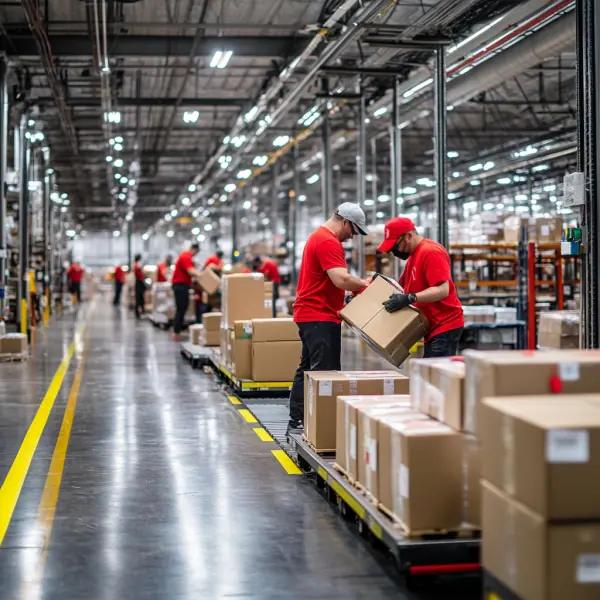
Carrier Facility FAQ

What does it mean when your package has arrived at a carrier facility?
You may have received a notices that an order has “arrived at carrier facility.” It could be at the parcel distribution center closest to where you live. If so, then the next step in its journey is being loaded into a delivery truck to go straight to your home.
However, as noted above, some packages stop off at multiple carrier facilities. Therefore, “Arrived at carrier facility” could simply mean that your order has completed one more leg of a multi-leg journey.










What does “left the carrier facility” mean?
A package that has left the carrier facility might be en route to your doorstep. But this could also indicate that it’s once again in transit, with a day or more before it reaches you.










Why do orders sometimes sit at carrier facilities?
If you’re tracking a much-anticipated online order, you might see your package arrive at a carrier facility. And then it might just sit there, sometimes for several days. That could mean that the delivery company is overwhelmed with boxes, so there’s a backlog in getting them on trucks for delivery.
A shortage of delivery trucks or drivers could also cause the bottleneck. During peak shipping times, such as during the holidays, deliveries sometimes take longer to arrive because the system just doesn’t have the capacity to transport all those boxes.










What carrier facility does Amazon use?
As Amazon has moved from Fulfillment by Amazon to its own fleet of delivery trucks, it has also added its own carrier facilities. Amazon has one of the largest and most sophisticated logistics operations in the world. It uses advanced technology to move products and orders efficiently.
Amazon has warehouse locations close to many population centers in the U.S. Therefore, your Amazon order might go straight from the warehouse to your door without a stop at a carrier facility. This enables Amazon to provide next-day, and sometimes even same-day, delivery.










Can you pick up a package at a carrier facility?
If your package is stuck at a carrier facility that isn’t far from your home, it’s tempting to go pick it up. Unfortunately, you can’t. These package distribution centers are industrial sites that aren’t built to serve members of the public.
Even if you could get to the warehouse, you can’t go pick up your box. These facilities aren’t set up in a way that employees can easily find a single package among the thousands of items moving through the warehouse.










Can I pick up my order instead of having it delivered?
While you can’t go to the carrier facility to get your package, you may have the option to have your package held for pickup. USPS will let you pick up a box at the Post Office. UPS and FedEx have retail locations where you can pick up packages as well as drop them off. In some cities, shipping companies use secure drop sites if you don’t want it left by your door.
You can often arrange for an alternate delivery address or a pickup by contacting the carrier. However, once it’s on the truck and heading for your doorstep, it’s probably too late.
What ecommerce companies need to know about tracking packages
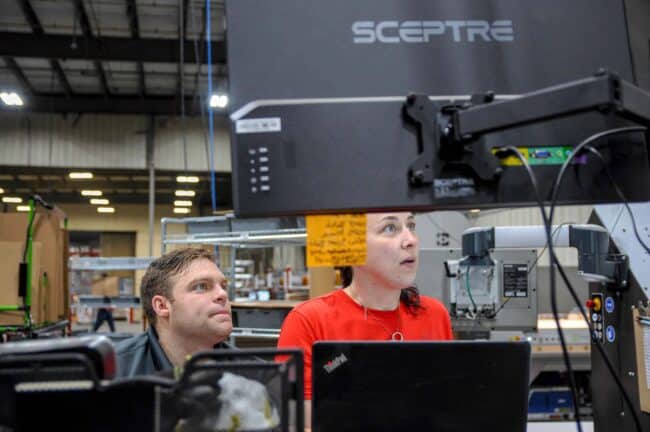
Customers aren’t the only ones that need to track eCommerce deliveries. Your eCommerce business needs to be able to track down packages to help troubleshoot for your customers.
You might also want to run a report with tracking data to determine how long your orders take to get to your customers. That can point you toward ways to improve your logistics operations, perhaps by adding new warehouse locations so your packages travel through fewer shipping zones.
At Red Stag Fulfillment, we specialize in helping eCommerce companies grow by optimizing order fulfillment.
Send us a message and let us know what your shipping and delivery challenges are, and we’ll tell you how we can help.






